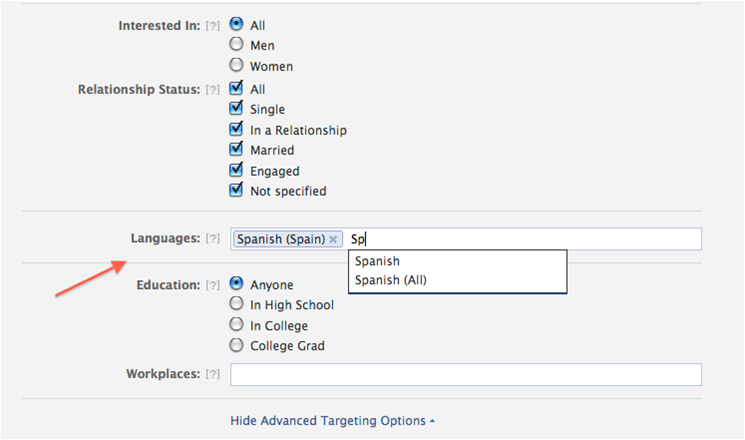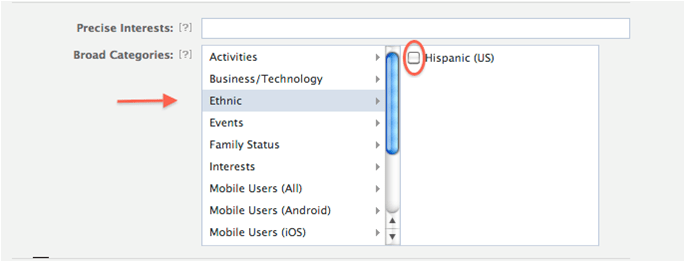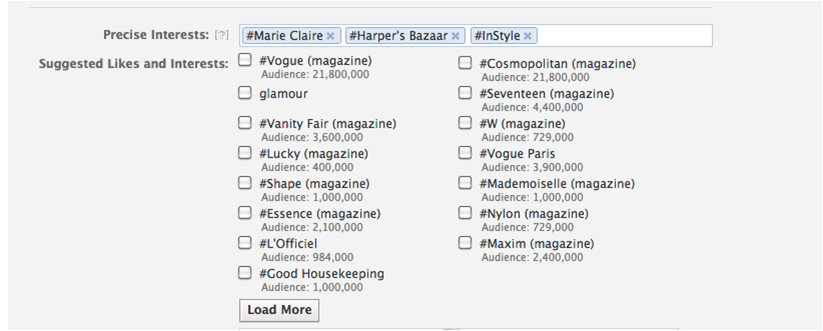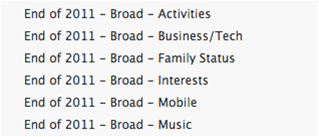The Dilemma with Facebook Ad Targeting
Crafting an effective Facebook advertising campaign is a key tool in helming a successful paid promotion. Beyond writing copy that’s succinct and persuasive and selecting images that convey your brand or organization, is determining who exactly to advertise to. For this, Facebook provides a search tool that will aggregate interests based on keywords to help generate target groups—a curated audience pool.
Advertising a Facebook page for a new car dealership? Why not create a target group that focuses on Facebook users interested in automotive brands? If the dealership is regional, you may want to filter your audience further by limiting the audience to the city and/or state in which it is located. Focusing on the product and potential consumers is a strategy that can be implemented when advertising consumer products, business, etc. The caveat to this form of straightforward, intuitive targeting is ethnicity.
Now, how do you target a population as diverse as they are large? Currently, the US Hispanic population is an estimated 52 million, 17% of the country’s total[1]. When targeting Hispanics a number of additional factors are at play, including language and demographics. To address this issue, we have tailored advertising strategies for a number of clients in order to effectively reach the Hispanic market, and share several tips below for how to do this on your own.
Below are Hispanic targeting strategies you can implement in your next Facebook advertising campaign:
Select Spanish as a language to target fans of English pages
Hispanics are multilingual individuals (Spanglish makes a very strong case for being a new language!) whose tastes are not limited to one country or one language. Your fan page’s new Like may come from a Spanish-speaking Puerto Rican woman who favors Marie Claire magazine. For this reason, it’s important to keep in mind that language does not beget tastes and vice versa. If the Facebook users you’re aiming to target live in the United States, chances are they dabble in some American pop culture, too. Select interests that reflect the campaign, business or product you’re trying to promote (regardless of language) and select “Spanish All” to set this up under the Advanced targeting options. Selecting Spanish, however, will limit your pool of users significantly. A general guideline is about 10% of the audience you had selected will remain if you add the Spanish filter. However, this can vary greatly depending on which interest is being selected. For example, approximately 5% of fans of Marie Claire have their settings in Spanish, while 26% of Ricky Martin fans have their settings set to Spanish.

Leverage Facebook’s Ethnicity —> Hispanic category.
Selecting “Spanish” as a language is useful, but it does have the capacity to reduce your expected audience significantly. In part because you’re targeting Facebook users who have changed the language in which their actual Facebook page appears. This isolates many bilingual Hispanics whose tastes and interests are rooted in their culture but prefer to read and engage on Facebook in English.
To navigate this issue, we suggest alternating between Spanish and the Ethnicity broad category, which lets you filter by users who have been classified by Facebook as Hispanic regardless of the language they speak. Be advised, however, that Facebook arbitrarily determines ethnicity[2] based on zip codes, last names and other superficial data too, so this information may not always be on target[3]. Nevertheless, choosing the Hispanic category allows marketers to mitigate the issue of language when targeting Hispanics.

Think outside the box when selecting interests.
Let’s say you’re working on that fictitious car dealership account and you’re trying to target Hispanics within the state. The target needs to go beyond plugging in words like “Ford,” “Chevy,” or “Automotive,” in combination with either the Spanish or Hispanic ethnicity filter. Many companies also have Hispanic focused Facebook pages, so you need to look for these too, such as Ford en Español. Consider creating target groups based on other interests. It may seem counter-intuitive to type in an unrelated keyword such as People magazine when you’re trying to market a car dealership but you’re targeting a complex demographic—not a monosyllabic tribe with a singular focus. Research the brand or business you’re trying to market and think about what other interests might pique users who can potentially Like your page, purchase your products or visit your brick and mortar location. However, if you’re starting with a general interest target, always include either Spanish language or the Hispanic ethnicity category to ensure that even that pool of general fans still falls within the Hispanic parameters.

Create several, complementing target groups.
If you’ve targeted fans of Marie Claire whom are categorized as Hispanic in one group and users interested in cars that have set their Facebook settings to Spanish in another, then create additional target groups based on complementing interests. As mentioned above, selecting other interests helps come at your target from other angles, and the results may often surprise you. A client of ours was pleasantly surprised when fans of the broad category, Heavy Metal Music was the top performer in regards to lowest cost per new fan for their government health agency Facebook page.
However, be sure to create these campaigns as distinctly as possible to prevent overlap, which will help you monitor the targets and interests that perform bests and optimize accordingly. For instance, if a certain target is out-performing another, it will be easier to adjust the budget of a campaign or know which target to use at a later date. Also, be sure to label each target with the name of the campaign, the name of the target and any other relevant information that will help identify the target group during reporting later.

Conclusion
With new features added to Facebook advertising all the time, it’s important to remain up to date with what becomes available. Utilizing features, such as Broad Categories to select Ethnicity is an easy way to hone in on Hispanics while still including interests relevant to the brand or business you’re aiming to promote. Language is also helpful in crafting Facebook Ads for Hispanics that are not quite bilingual. Selecting whether to filter by Category or language depends on your desired target and the brand or business; these should not be used interchangeably. Consider the brand and the campaign before opting for either—or try them both. The point of the different filtering functions is to help users leverage Facebook Ads so that they reach new, potential consumers.
Your Thoughts
Keeping up with Facebook’s new ad features and functions is paramount to leveraging Facebook Ads successfully. We hope that our tips for targeting Hispanics using Facebook ads will help in creating future ad campaigns to reach this rising group.
Have you been successful in targeting Hispanics with Facebook Ads? Have you found language filters to be more efficient than Broad Categories? How do you filter your audience to be mostly Hispanic when creating a Facebook ad campaign? Tell us about your experience using Facebook ads to reach Hispanics in the comment section below.
[1] NBC Latino, Latinos in U.S. reach 52 million but growth is from births not immigration
[2] Colorlines, Facebook Can Predict Your Ethnicity




